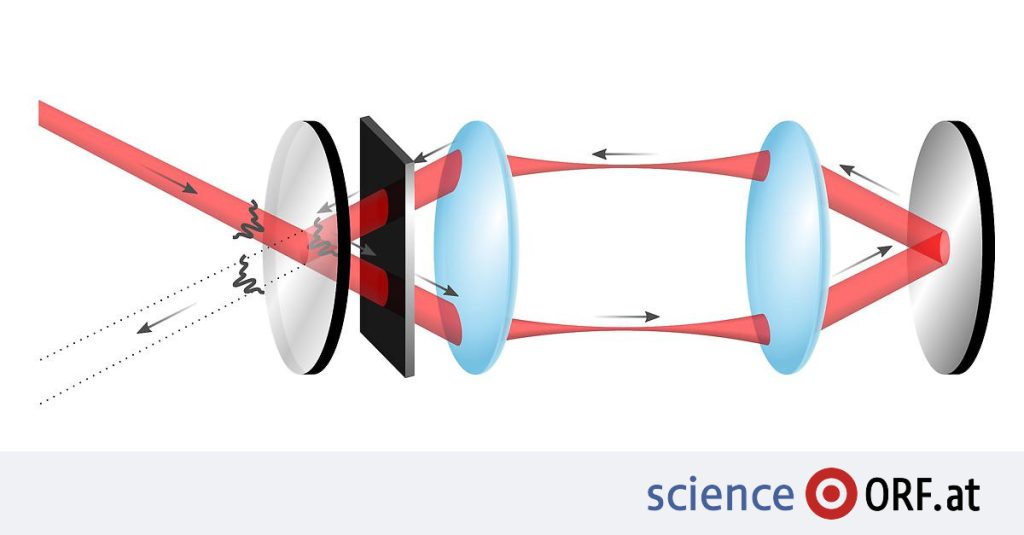In science and technology, it is often necessary to absorb as much light as possible in order to obtain energy from it or to examine the incident light as accurately as possible. This is relatively easy when dealing with bulky objects, such as photovoltaic systems. However, full absorption of light becomes more complex when it comes to thin films and thus transparent materials.
Use light efficiently
You can also see it in daily life Stephen Rother Explained by the Institute of Theoretical Physics of the Technical University (TU) in Vienna. An example of good absorbency is black clothing. On the other hand, the retina absorbs light less. As it gets darker in the evening, visibility also gets worse – although there is still a little light. However, because the retina is very thin and transparent, a lot of incoming light is lost and cannot be used optimally.
Nocturnal animals or those who hunt at night have an advantage. Cats need to use the little light that is present efficiently so that they can see them at night. “Animals manage this by having a reflective layer behind the retina. This means that the light is sent back and the retina can absorb the beam again,” Rutter explains to Science.ORF.at. This is also why cats’ eyes glow at night.
The nature of the role model
Rotter has been dealing with light absorption for a long time and wanted to use the feline approach to the optimal use of light in science and technology. Together with the experimental physicist Uri Katz From the Hebrew University of Jerusalem, he had an idea for a light trap that could perfectly absorb a beam of light even in thin layers – much better than cats. Rotter: “The beam of light only enters through the retina of the cat’s eye twice, but in our way the beam is reflected repeatedly and hits the material until it is completely absorbed.”
Theoretical calculations of the “perfect light trap” came from Vienna and then the team realized it experimentally in Jerusalem. who – which result The researchers are currently reporting this in the journal Science.
One-way street of light
The trap consists of neatly arranged mirrors and lenses, which allow a ray of light to pass through a partially transparent mirror inward, but then direct it in a circle for so long that it eventually interferes with itself. The partially transparent mirror initially becomes completely transparent to the incident laser beam.
The result, so to speak, is a one-way street of light. If the trap is precisely tuned to the wavelength of the light beam, it will prevent itself from getting out of the trap again. “So the light has no other way out than to be completely absorbed by the thin material inside the trap,” says Rotter.
powerful system
In addition to perfect absorption, the trap also has other advantages, such as its durability. “The system has to be tuned exactly to the wavelength you want to absorb,” Rotter says. But apart from that, there are no specifications. The laser beam does not have to have a specific shape. And it can be more severe in some places than others.”
Even air turbulence or temperature fluctuations cannot harm the mechanism, researchers have shown in experiments in Jerusalem. As a result, the trap can have many uses.
Wide range of applications
Among other things, the mechanism will be well suited for capturing even distorted optical signals during transmission through the Earth’s atmosphere. Light from weak light sources, such as distant stars, can also be optimally fed into the detector.
The light trap has just been tested in the lab – it may take some time before it can actually be used in practice. For the first time, we were able to build a trap that perfectly captures the light and never lets it out again. With the restriction that the trap has so far only operated at a clearly defined frequency,” says Rotter. The method from Vienna is ideal for this frequency, but it is not yet usable for sunlight, which does not have a well-defined frequency. So Rotter would like to improve the trap for other light frequencies. In future studies.

“Total coffee aficionado. Travel buff. Music ninja. Bacon nerd. Beeraholic.”








More Stories
Coral Seeding: Artificial Insemination Makes Coral More Heat Tolerant
Fear, Anger, and Denial: How People Respond to Climate Change – Research
LKH Graz: Using radiation to combat heart arrhythmias